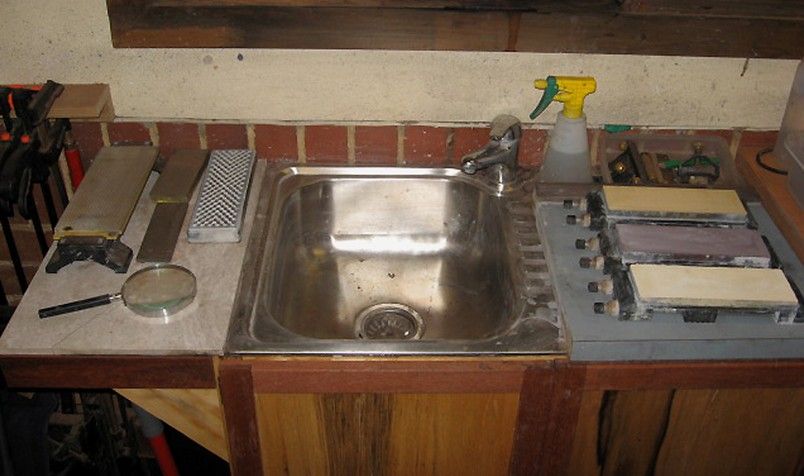Jacob":1ydginkk said:ali27":1ydginkk said:Jacob, two stones cannot produce a flat surface. You need a third stone
and as has been mentioned correctly, they need to be the same hardness, grit.
What two stones can do is that if you sharpen a slightly concavity in both lengthwise,
by rubbing them together this concavity is reduced.Sort of correct in theory but in practice you LOOK at what you are doing and correct accordingly e.g. make more effort to remove high spots
A 10 second flattening is faster. All this time and effort in removing the high spots is
not the Jacob I know
It's entirely up to you. You are in control. You monitor progress by LOOKINGNot sure what happens in the width
of the stone.Not if I don't let it! I am not a robot, are you?You wrote that your stone has slight convexity in the width. That is not good
as your plane iron will rock left to right ever so slightly.Done it (once). Found that my nicely cambered plane blades were harder to hone. Didn't bother doing it again. No point that I could see.Try honing a square edge on your stones, then report back. Your plane irons
are cambered
Jacob, just for trying something completely new, flatten your oil stones with some
wet and dry. Draw some lines and start flattening. After your oilstones are flat, sharpen
a single plane iron or chisel on them and come back and tell us the result.Oh dear - you aren't taking me seriously. I'm so upset! :lol: :lol:25 years using an oilstone without flattening it and still having a flat surface?Hmm, first
I don't believe the stone hasn't been flattened in 25 years(Mr Schwartz can't prove that),
second thing is I am not sure I would take a woodworker seriously if he hadn't flattened his
sharpening stone in 25 yearsEasier not to bother, and a waste of good stoneI mean how difficult would it be to do it once monthly?So I gather! The secret is in LOOKING at what you are doing, applying a straight edge etc and correcting your procedures to achieve the degree of flatness you feel needAm I supposed to believe this Mr has a succesful method which allowed him to sharpen
his tools for 25 years on an oilstone and keeping it flat within a thou or so? I have a hard
time believing this.
Applying a straight edge? This coming from the man that refuses to use
a ruler for the ruler trick. (hammer) :lol:
I need about 20-30 seconds to flatten both stones.Takes me ten second to create a
burr on the 1000 grit stone and 15 seconds on the polishing stone to create a tiny microbevel. 5
seconnds to remove the burr. That is about one minute. No eye balling, no straightedges, excellent
result. The only disadvantage I would have compared to your method Jacob, is that I am wasting stone
whilst flattening. I try to use the whole stone, but unfortunately the edges will always wear less because
those areas are too difficult to sharpen on





